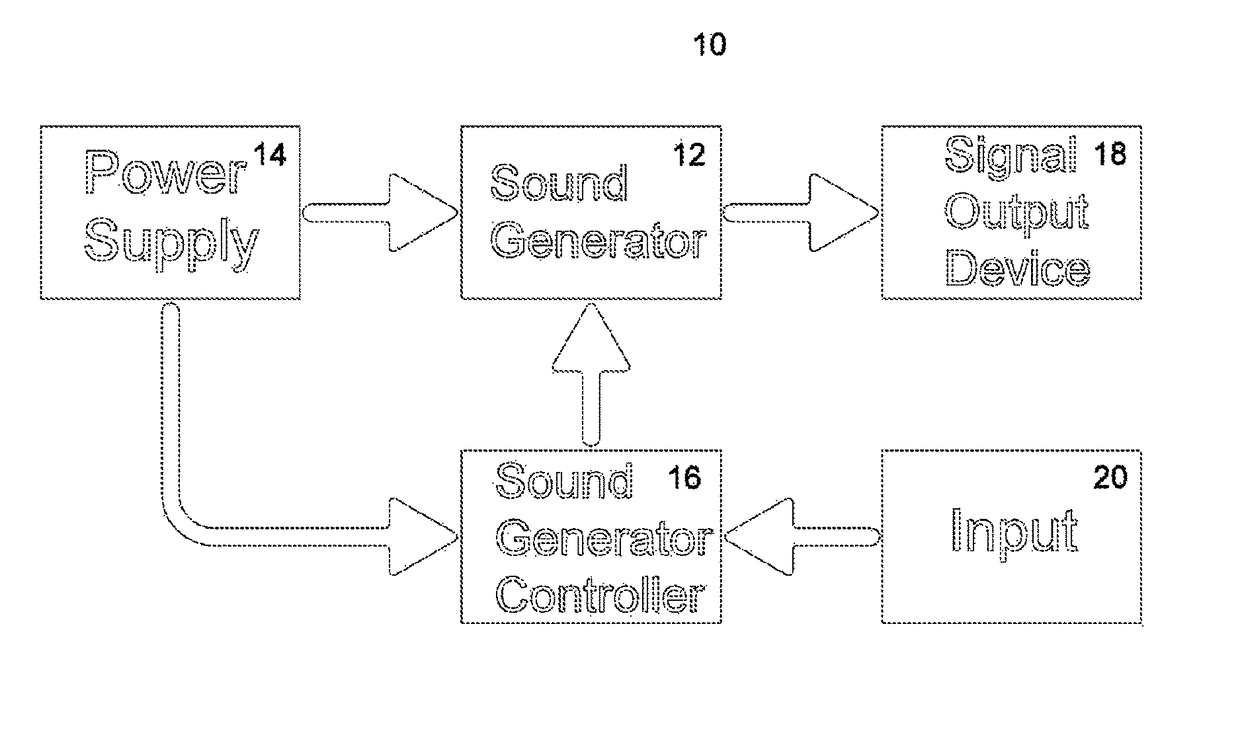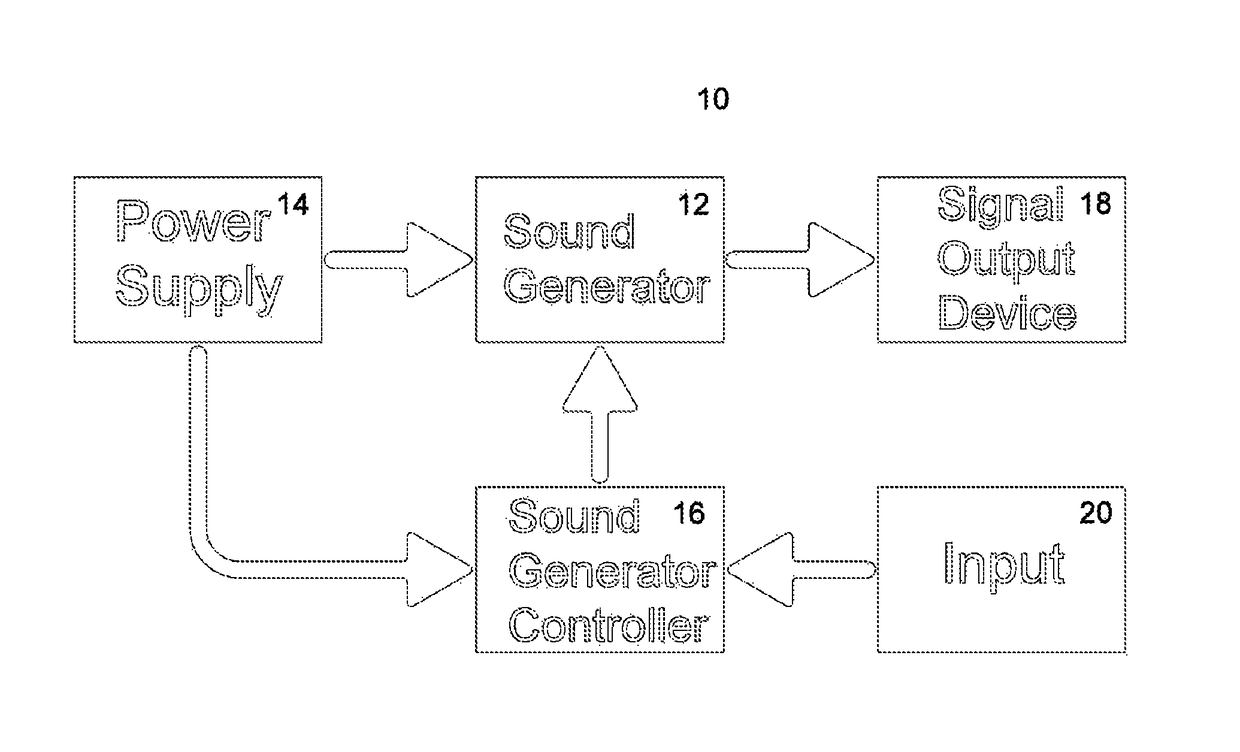Sound management systems for improving workplace efficiency
a sound management system and workplace technology, applied in the field of sound management systems for improving workplace efficiency, can solve the problems of not everyone being able to work so efficiently, work efficiency and even morale can suffer, and not everyone can work so efficiently
- Summary
- Abstract
- Description
- Claims
- Application Information
AI Technical Summary
Benefits of technology
Problems solved by technology
Method used
Image
Examples
Embodiment Construction
[0022]Referring to FIG. 1 and according to a first embodiment of this invention, a sound-management system 10 is schematically illustrated and includes sound generator 12, power supply 14, sound controller 16, and sound output device 18. Sound output device 18 may be any of several devices, including open speakers, headphones, bone-conduction transducers, vibration generators and any other device that is able to convert electrical signal into a corresponding sound wave that can be heard or felt by a user in a particular environment. Applicants consider use of headphones to be a preferred sound output device for this invention.
[0023]Sound generator 12 produces sound, either structured, such as music, or random noise, such as “pink noise.” The sound can either be pre-recorded and provided as sound or music files (stored on an appropriate memory), or can be a circuit-based device that includes electrical components that are arranged to generate electronic “noise” and other electrical c...
PUM
 Login to View More
Login to View More Abstract
Description
Claims
Application Information
 Login to View More
Login to View More - R&D
- Intellectual Property
- Life Sciences
- Materials
- Tech Scout
- Unparalleled Data Quality
- Higher Quality Content
- 60% Fewer Hallucinations
Browse by: Latest US Patents, China's latest patents, Technical Efficacy Thesaurus, Application Domain, Technology Topic, Popular Technical Reports.
© 2025 PatSnap. All rights reserved.Legal|Privacy policy|Modern Slavery Act Transparency Statement|Sitemap|About US| Contact US: help@patsnap.com


